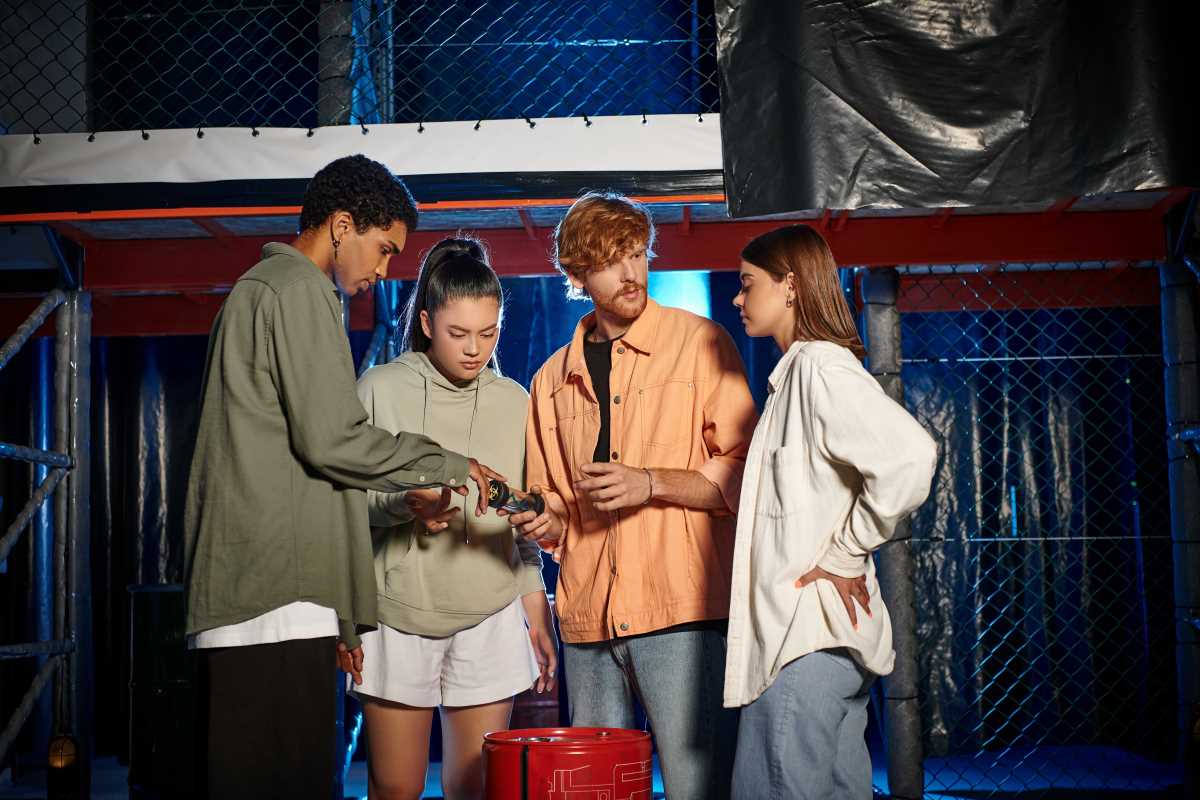Escape rooms offer a unique and thrilling adventure, blending teamwork, puzzle-solving, and immersive storytelling into one exciting package. These real-life games challenge you and your friends to solve a series of puzzles to "escape" a themed room within a set time limit. It’s an amazing way to test your problem-solving skills and have a memorable experience. We’ve got you covered with a complete guide to get you started. This article will walk you through how to choose the right room, what to expect during your first adventure, and tips to help your team succeed, ensuring you feel confident and ready to play.
What Exactly Is an Escape Room?
An escape room is a live-action adventure game where a team of players is "locked" in a themed room and must work together to find clues and solve a series of puzzles to complete a mission or escape before time runs out. Most games last for 60 minutes, creating a fun, high-energy environment.
The Basic Concept
The core of the experience is teamwork and creative thinking. You won't need any special knowledge or physical strength; everything you need to solve the puzzles is provided within the room itself. Each room is built around a specific theme, such as a detective's office, a mad scientist's lab, or a mystical ancient temple. The puzzles, clues, and decorations are all designed to fit the storyline, making you feel like you are truly part of the narrative.
Your Goal as a Team
Your primary objective is to collaborate with your teammates to achieve the room's goal. This usually means finding a final key, code, or object that allows you to "escape." A game master will monitor your progress through cameras and microphones, and you can ask them for hints if your team gets stuck. It’s all about communication, observation, and putting your heads together to crack the codes.
How to Choose the Right Escape Room
Finding the perfect first escape room can make all the difference. With so many themes and difficulty levels available, a little research will help you find an experience that your whole group will enjoy. Let's walk through how to pick the best option.
Consider the Theme
The theme sets the stage for your entire adventure. Do you want to solve a mystery, survive a zombie apocalypse, or pull off a daring heist? Escape room companies offer a huge variety of themes to suit every interest. Discuss with your group what kind of story sounds the most exciting. A theme that everyone is enthusiastic about will make the experience more engaging and fun from the very beginning. You can usually find detailed descriptions and photos of the rooms on the company's website.
Check the Difficulty Level
Escape rooms are rated by difficulty, often on a scale of 1 to 10 or with labels like "beginner," "intermediate," and "expert." For your first time, it's a great idea to choose a room with a beginner or lower-intermediate rating. This will allow your team to get a feel for how the puzzles work without feeling overwhelmed. A room with a success rate of around 40-50% is often a good starting point. You can always tackle a more challenging room on your next visit.
Read Reviews and Get Recommendations
Reviews from other players are an excellent resource. Look at platforms like Google, Yelp, or dedicated escape room review sites to see what people are saying about a particular company or room. Pay attention to comments about the quality of the puzzles, the immersiveness of the theme, and the helpfulness of the staff. Positive reviews that mention creative puzzles and a great atmosphere are a good sign you're on the right track.
What to Expect During Your First Game
Knowing what will happen before you arrive can help ease any nerves and allow you to focus on the fun. Here is a step-by-step breakdown of a typical escape room experience.
The Pre-Game Briefing
You will be asked to arrive about 15 minutes before your scheduled time. During this period, you’ll sign waivers and meet your game master. The game master is your guide for the experience. They will explain the rules of the room, such as what you should and shouldn't touch, and how to ask for hints. They will also introduce the story and your specific mission. This briefing is your chance to ask any questions you might have before the clock starts ticking.
Entering the Room and Starting the Clock
Once the briefing is complete, your team will be led into the themed room. The game master will give a final piece of the story, and then the door will close and your 60-minute countdown will begin. The first few moments are all about taking in your surroundings. Look around, observe everything, and start talking with your teammates about what you see. This initial exploration phase is key to finding your first clue.
Working Together to Solve Puzzles
As you find clues, you’ll encounter different types of puzzles. These can include logic problems, pattern recognition, hidden objects, and locks that require number or letter combinations to open. The puzzles are often interconnected, meaning the solution to one will lead you to a clue for the next. Communication is absolutely essential here. Be sure to share everything you find with your team, as a clue that seems meaningless to you might be the missing piece someone else needs.
Tips for a Successful First Escape
You are now ready to take on the challenge. Keep these simple tips in mind to help your team work effectively and increase your chances of success. We’ve got you covered with a few strategies.
Communicate Everything
The number one rule of escape rooms is to communicate. Announce what you find, read clues out loud, and share your ideas, even if they seem silly. Every observation is valuable. A symbol you spot on a wall might match a pattern a teammate finds in a book. Constant communication keeps everyone on the same page and helps you connect the dots faster.
Divide and Conquer
It’s often a good strategy to split up and have team members work on different puzzles at the same time. Some rooms are designed with multiple puzzle paths that can be solved simultaneously. While a few people are trying to crack a code, others can be searching another part of the room for more clues. This approach helps you cover more ground and solve puzzles more efficiently.
Don’t Be Afraid to Ask for Hints
Asking for a hint is not a sign of failure; it’s a smart part of the game. Game masters are there to ensure you have a good time, not to watch you struggle. If your whole team is stuck on a single puzzle for more than five or ten minutes, it's a good idea to ask for a clue. A small nudge in the right direction can get your momentum back and make the rest of the game much more enjoyable. You have the power to create an amazing and successful experience for your team.
 (Image via
(Image via





